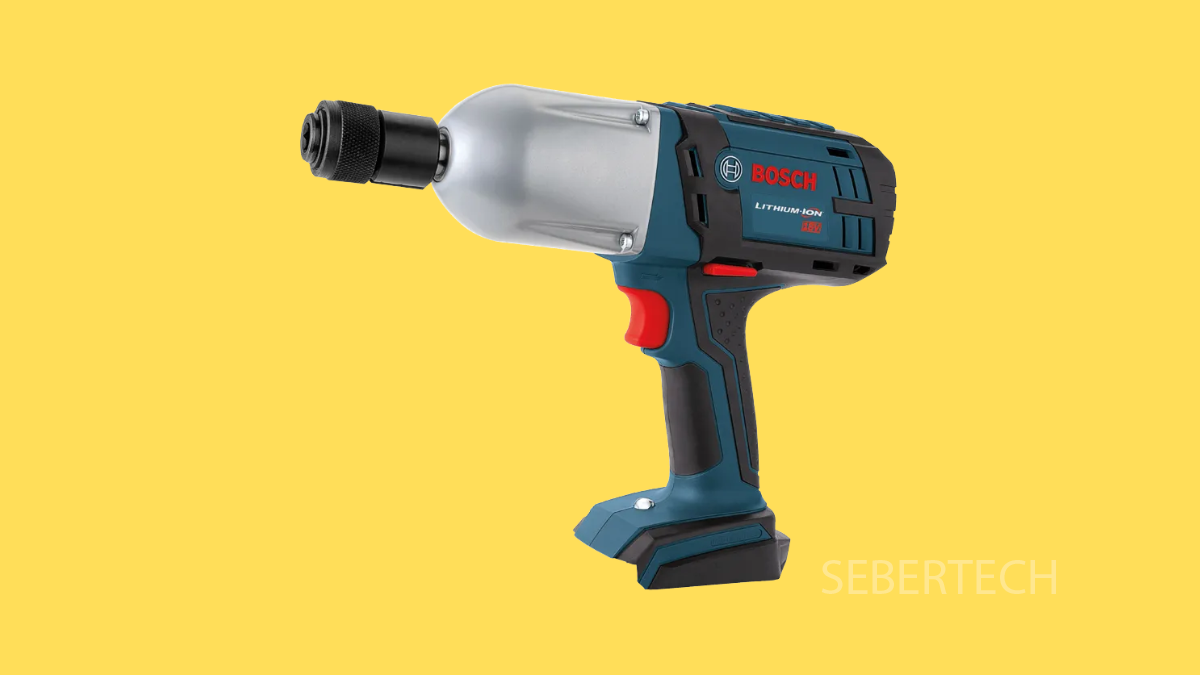If your Bosch impact wrench suddenly feels weak, it can make tough jobs like loosening bolts frustrating. A tool designed for heavy-duty torque should not struggle with tasks it once handled easily. Luckily, there are several ways to restore its full power.
Why Your Bosch Impact Wrench Might Lack Torque
- Battery charge is too low or the battery itself is failing.
- Motor brushes or internal parts are worn out.
- Wrong socket type or poor socket fit is reducing torque transfer.
- Tool mode or speed setting is incorrect.
- Internal lubrication is poor, causing friction and power loss.
Check the Battery Condition.
Impact wrenches depend heavily on a strong, fully charged battery. A weak or damaged battery cannot deliver enough power to the motor.
- Remove the battery, and then place it on the charger.
- Wait until it reaches a full charge, and then reattach it to the wrench.
If the problem continues, try another compatible Bosch battery. A failing battery pack often explains sudden torque loss.
Inspect the Sockets You Are Using.
Using worn or incorrect sockets reduces the wrench’s ability to transfer power. Thin or rounded edges can slip under pressure.
- Remove the current socket, and then inspect it for wear.
- Replace it with a Bosch impact-rated socket, and then test the tool again.
Adjust the Speed or Mode Setting.
Many Bosch impact wrenches have different speed or torque modes. If it is set too low, you will not get maximum output.
- Check the mode selector switch, and then move it to a higher torque setting.
- Hold the trigger and test it on a bolt to confirm improved performance.
Clean and Lubricate the Tool.
Over time, dust, grime, and lack of lubrication can slow down internal parts. This increases resistance and reduces torque.
- Unplug or remove the battery, and then wipe down the tool with a clean cloth.
- Apply Bosch-approved lubricant to the anvil and moving parts, and then reassemble before testing.
Examine Motor Brushes and Internal Parts.
Worn motor brushes or damaged gears can cause a significant drop in torque. These parts need replacing after long-term use.
- Remove the screws on the housing, and then carefully open the tool.
- Check the brushes for wear, and then replace them if they are short or uneven.
If gears are damaged or the motor is burnt, professional servicing may be required.
Your Bosch impact wrench should perform at full torque when all these areas are checked. Most problems come down to the battery, sockets, or settings, but maintenance can also make a huge difference.
FAQs
Why does my Bosch impact wrench only work for a few minutes before losing torque?
This usually points to a failing battery that cannot hold a full charge. Try another battery to confirm.
Can I use regular sockets with a Bosch impact wrench?
No. Regular sockets may crack under pressure and reduce torque. Always use impact-rated sockets.
How often should I maintain my Bosch impact wrench?
Wipe it down after every job, lubricate monthly, and check motor brushes every few months if you use it regularly.
